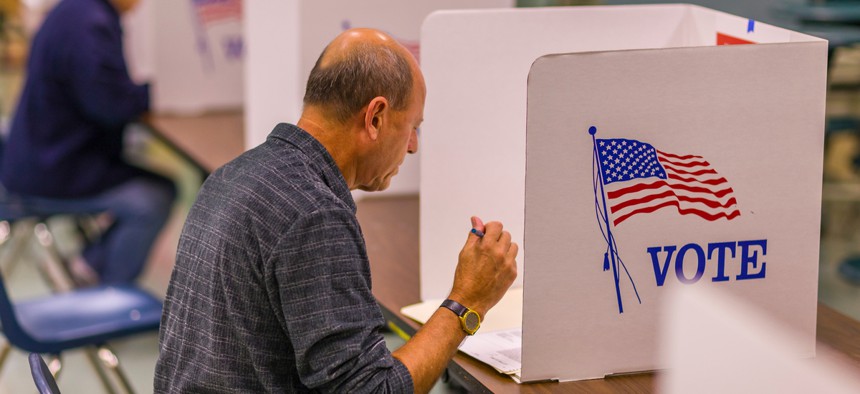Automatic Voter Registration Could Increase Turnout, Advocates Say

Same-day voter registration and pre-registration of 16- and 17-year-olds are among policies that could help boost voter turnout. shutterstock

Connecting state and local government leaders
It's one of a handful of voter-friendly policies recommended in a new report from the Democratic-leaning Center for American Progress.
Adopting policies to make voting more convenient could encourage millions of eligible voters to head to the polls after years of historically low turnout, according to a new report from the Center for American Progress, a liberal policy institute.
The report, titled Increasing Voter Participation in America: Policies to Drive Participation and Make Voting More Convenient, recommends that states adopt a host of policies to eliminate barriers to voting, including same-day voter registration, pre-registration of 16- and 17-year-olds, increased civic education in schools and automatic voter registration.
Implementing automatic voter registration in all 50 states would add more than 22 million new voters on its own, the report estimates. Twelve states—Alaska, California, Colorado, Connecticut, Illinois, Maryland, New Jersey, Oregon, Rhode Island, Vermont, Washington and West Virginia—along with the District of Columbia, currently have some form of automatic voter registration, where “eligible citizens are automatically registered to vote using voter eligibility information that the state already receives, unless the individual chooses to decline registration.”
The current voter registration process—including a dearth of accessible information about where and how to register—is a significant hindrance to voter turnout, the report says. In a 2017 survey by the Pew Charitable Trusts, 6 percent of respondents said they weren’t registered to vote because they didn’t know how to register. It’s an ongoing problem—in 2014, 1.9 million people didn’t register to vote because they didn’t know where or how to do so.
Voter registration rates are lower among communities of color, low-income residents, people with disabilities and young people. In 2016, for example, 69 percent of black residents, 57 percent of Hispanic Americans and 56 percent of Asian Americans were registered to vote, compared with 72 percent of white residents, according to census data. Americans making at least $100,000 per year are also far more likely to vote than Americans making less than $25,000 per year.
Automatically registering voters can address some of those issues. In 2016, Oregon implemented an automatic registration system that registers eligible voters by using their records at the Department of Motor Vehicles. (Applications for driver’s licenses, learner’s permits or other ID cards require the same information as the state’s voter registration system.)
When residents provide their information—name, address, date of birth and citizenship—to the DMV, the agency automatically submits it to the secretary of state's elections division. That office then sends a postcard to each person, saying they’ll be registered to vote unless they decline by signing and sending back the card within 21 days. Voter registrations are automatically updated and confirmed when the information is changed, including when a resident moves to a new address.
More than 272,000 new people were added to the state’s voter rolls through automatic registration, according to the Center for American Progress. More than 98,000 of those voted in the 2016 presidential election.
As a result of the new system, “Oregon’s electorate is now more representative of the state’s population, as citizens registered through the program are younger, more rural, lower-income and more ethnically diverse,” the report says.
Oregon is one of eight states highlighted in the report as being the best “when it comes to adopting policies that turn out more voters.” Other top states include California, Colorado, Illinois, Maryland, New Jersey, Utah and Washington, all of which have some combination of automatic voter registration, same-day voter registration, pre-registration of 16- and 17-year-olds and online registration.
States with the fewest voter-friendly policies include Alabama, Arkansas, Mississippi, Missouri, South Carolina, South Dakota, Kentucky, Tennessee and Texas.
Kate Elizabeth Queram is a Staff Correspondent for Government Executive’s Route Fifty and is based in Washington, D.C.

NEXT STORY: Driving Without a Smartphone




